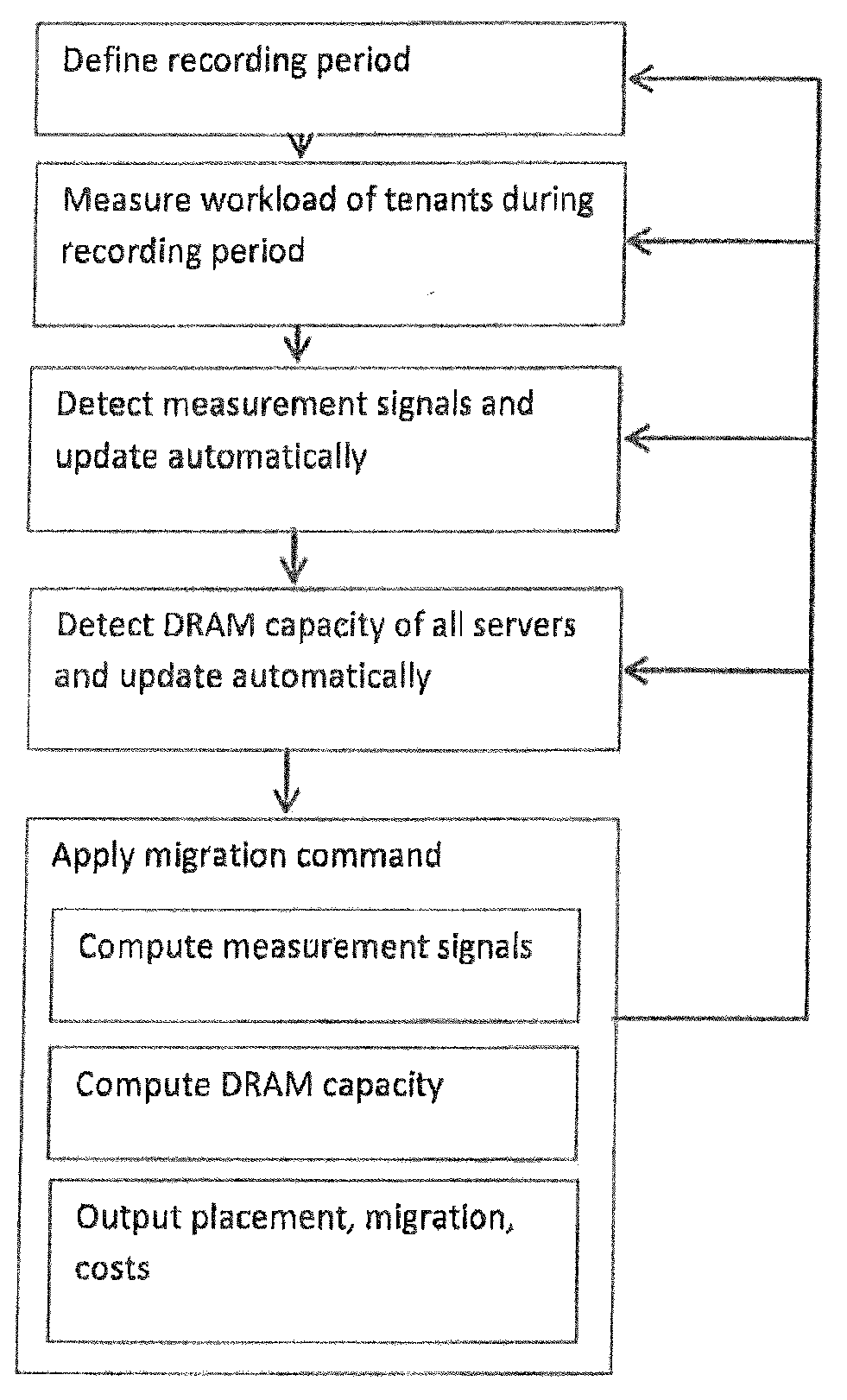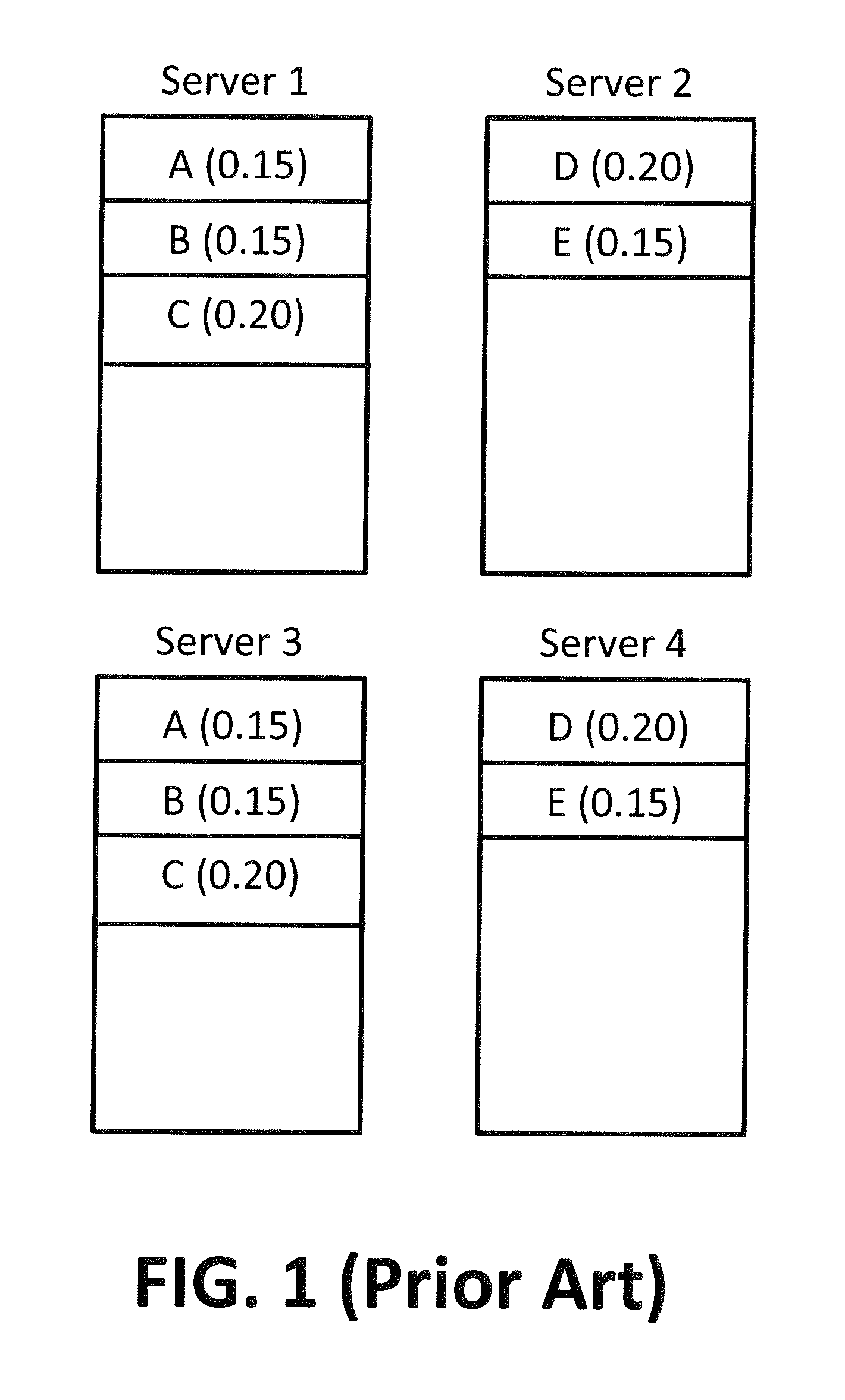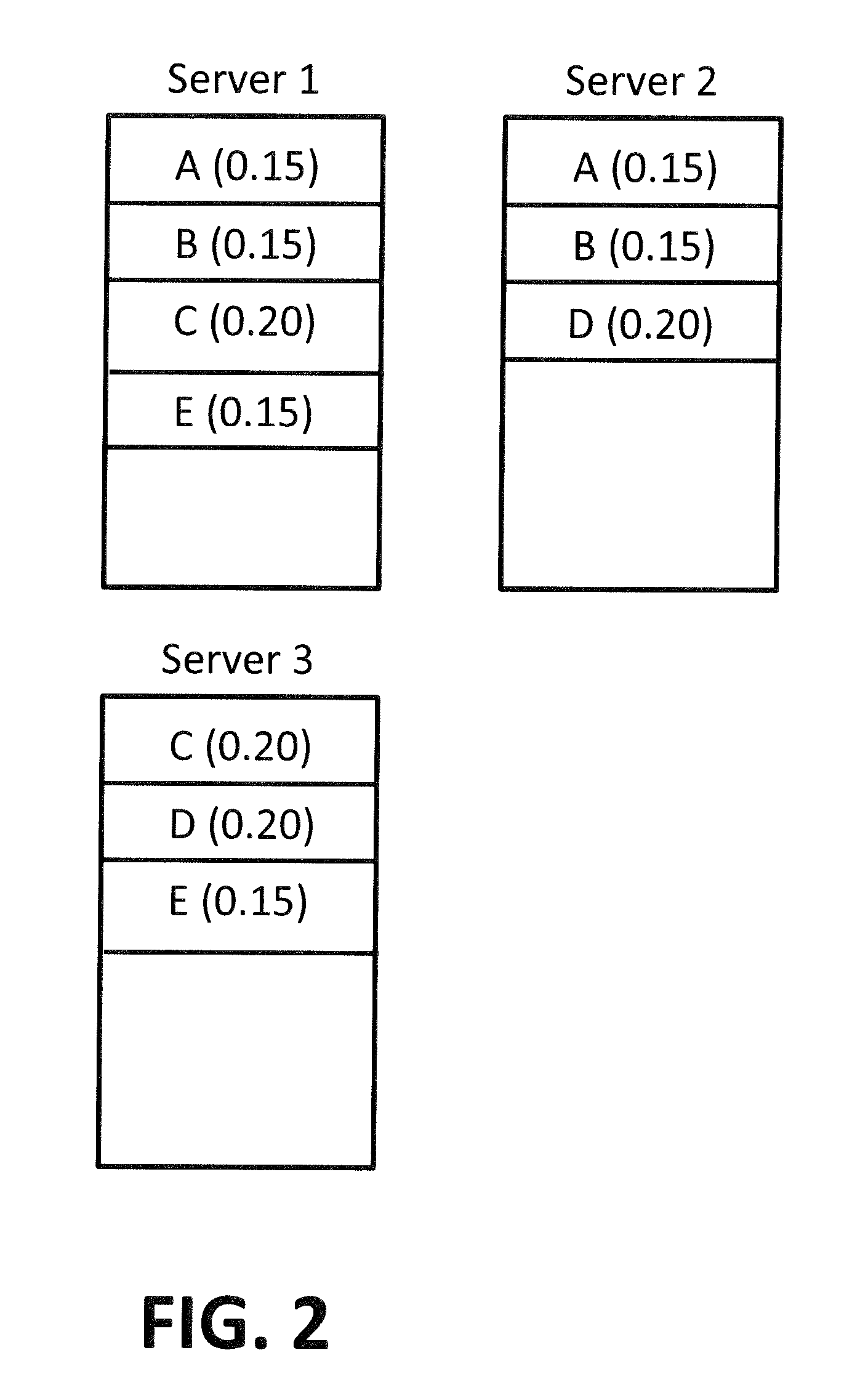Robust tenant placement and migration in database-as-a-service environments
a tenant technology, applied in the field of robust tenant placement and migration in database as a service environment, can solve the problems of not being realistic for cloud environments, not being able to hold assumption, changing tenant resource requirements with little notice, etc., to reduce the operational cost of in-memory dbaas, improve utilization, and reduce the required “headroom”
- Summary
- Abstract
- Description
- Claims
- Application Information
AI Technical Summary
Benefits of technology
Problems solved by technology
Method used
Image
Examples
example 1
[0144 suggests using the number of copies per tenant T as a variable in RTP as opposed to merely an input parameter.
[0145]In the following a recovery-aware placement will be described in more detail. Until now, the RTP has been formulated such that a tenant placement must be robust towards one server failure. When a server fails, however, it must be possible to migrate the tenants T on the failed server to a new server. Migration should not cause overloading of the remaining servers holding copies of the failed tenants T.
[0146]Migrations consume resources on any server i, which temporarily reduces the server's capacity for processing requests (capl(i)). How much the capacity degrades during migration depends on the actual schema and workload. The impact of a migration could differ on the migration source and migration destination server. Evaluations and experiments show that the overhead for migrating an in-memory database was determined to be 15% on the source server and 18% at the...
PUM
 Login to View More
Login to View More Abstract
Description
Claims
Application Information
 Login to View More
Login to View More - R&D
- Intellectual Property
- Life Sciences
- Materials
- Tech Scout
- Unparalleled Data Quality
- Higher Quality Content
- 60% Fewer Hallucinations
Browse by: Latest US Patents, China's latest patents, Technical Efficacy Thesaurus, Application Domain, Technology Topic, Popular Technical Reports.
© 2025 PatSnap. All rights reserved.Legal|Privacy policy|Modern Slavery Act Transparency Statement|Sitemap|About US| Contact US: help@patsnap.com



